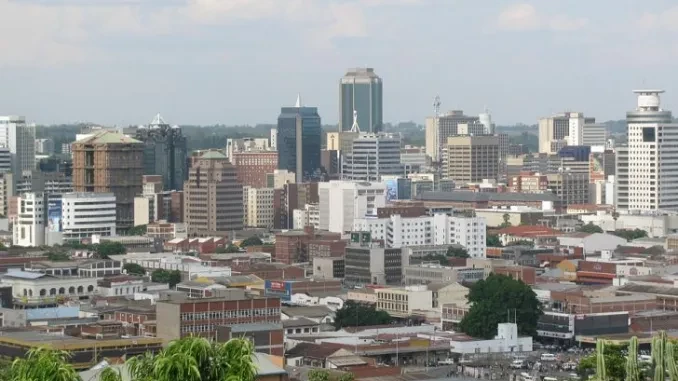
LEGAL think tank Veritas says major economic sectors must double in size for the economy to attain an upper middle-income status, amid these sectors facing a series of challenges.
Over the past few years, due to an increase of geopolitical tensions and worsening climatic conditions, Zimbabwe’s mining and agriculture sectors have, respectively been hit hard.
For mining, the geopolitical tensions have, translated to volatility in the commodities market, while for agriculture, climate change is lowering crop production.
Consequently, the plan to reach an upper middle-income economy by 2030 is under threat.
“To be regarded as an upper middle-income economy, the World Bank states that a country needs to have a gross national income (GNI) of between US$4 466-13 845 per capita,” Veritas said, in a statement commemorating the country’s Independence Day on April 18.
“GNI is the total amount of money earned by a nation’s people as well as its businesses and it also includes the gross domestic product as well as income from exports; this total is then divided by the number of people in the country. In short, it is a measure of wealth of the nation. In 2022, the GNI per capita for Zimbabwe was only US$1 500.”
Veritas said analysts do say, however, that it was possible for Zimbabwe to reach the required GNI to be an upper middle-income economy by 2030, but it would not be an easy feat.
“Major growth in the main economic sectors would have to take place — some having to double in size. We also have to look at the distribution of wealth. GNI can be boosted by a top layer of very wealthy people, leaving the majority of citizens living below the poverty datum line. This is not a result we should aim for,” Veritas said.
- Mavhunga puts DeMbare into Chibuku quarterfinals
- Bulls to charge into Zimbabwe gold stocks
- Ndiraya concerned as goals dry up
- Letters: How solar power is transforming African farms
Keep Reading
Economists have been arguing that since the country’s informal sector is valued at US$8,6 billion, Zimbabwe’s economy must lean into it given these increased shocks to traditional economic generators.
“It is important to take note that we are only six years away from the 2030 deadline and six years have already elapsed since we set out the goal to be an upper-middle-income economy,” Veritas said.
“We need to reflect on whether or not, at this half-way mark, we are making real progress towards the vision.”
Speaking at last week’s 2024 Post Monetary Policy Breakfast Meeting, in Bulawayo, organised by the Zimbabwe Independent, economic analyst Dumisani Sibanda said the informal sector, which made up over 60% of the economy, influenced economic behaviours.
“That 60% does not bank its money, that 60% don’t face many costs from South Africa and that economy has no regulations. You may try to use force and so on, but human behaviour is such that when we use force it will get more creative,” he said.
“When we look at the informalisation of the economy, where[by] that 60% is informal, whenever we make policies, those policies speak to the formal sector and not so much that informal sector, where most of the citizens are.”
Hence, the push to make policies targeted at the informal sector given its economic generation potential.










